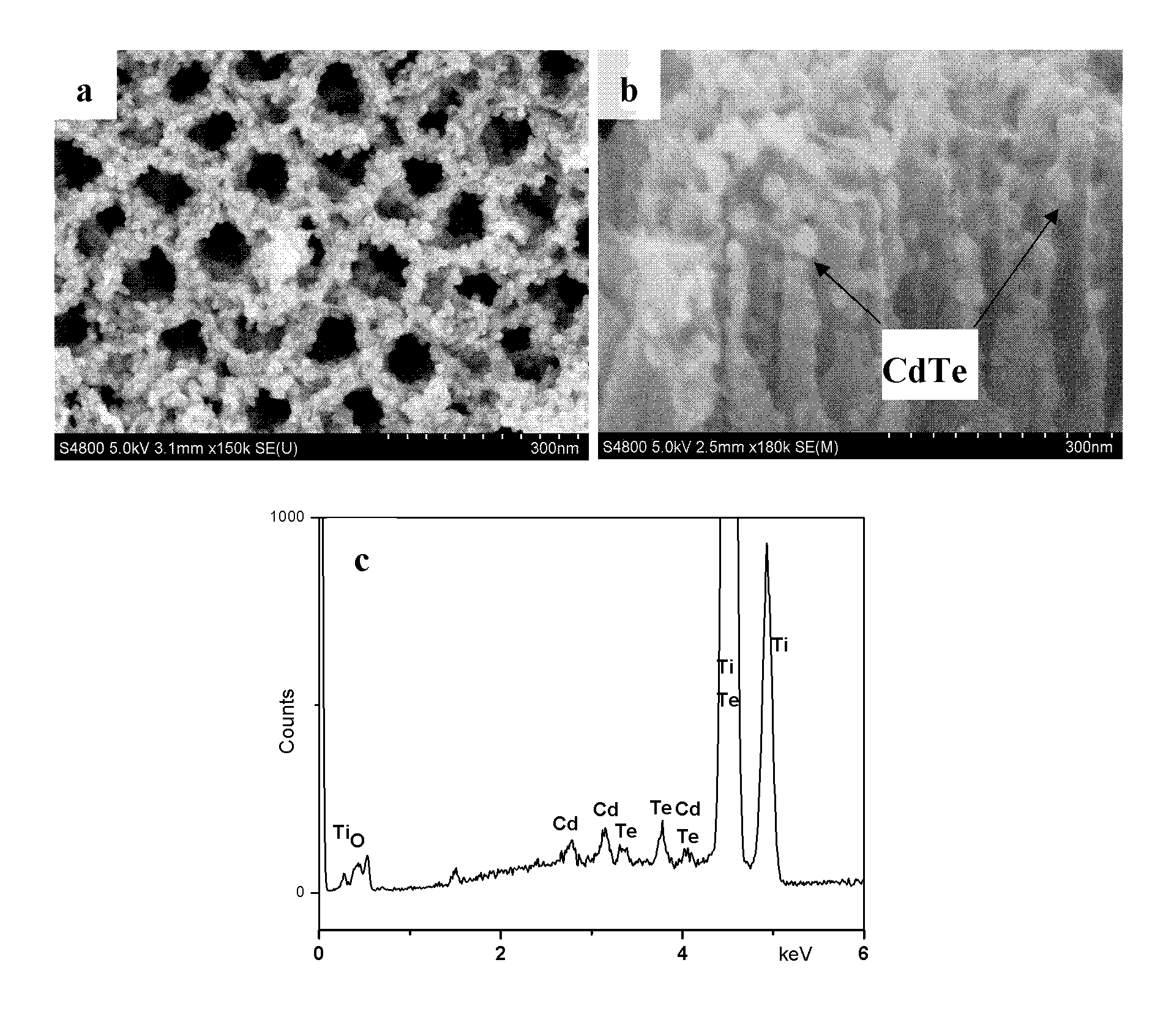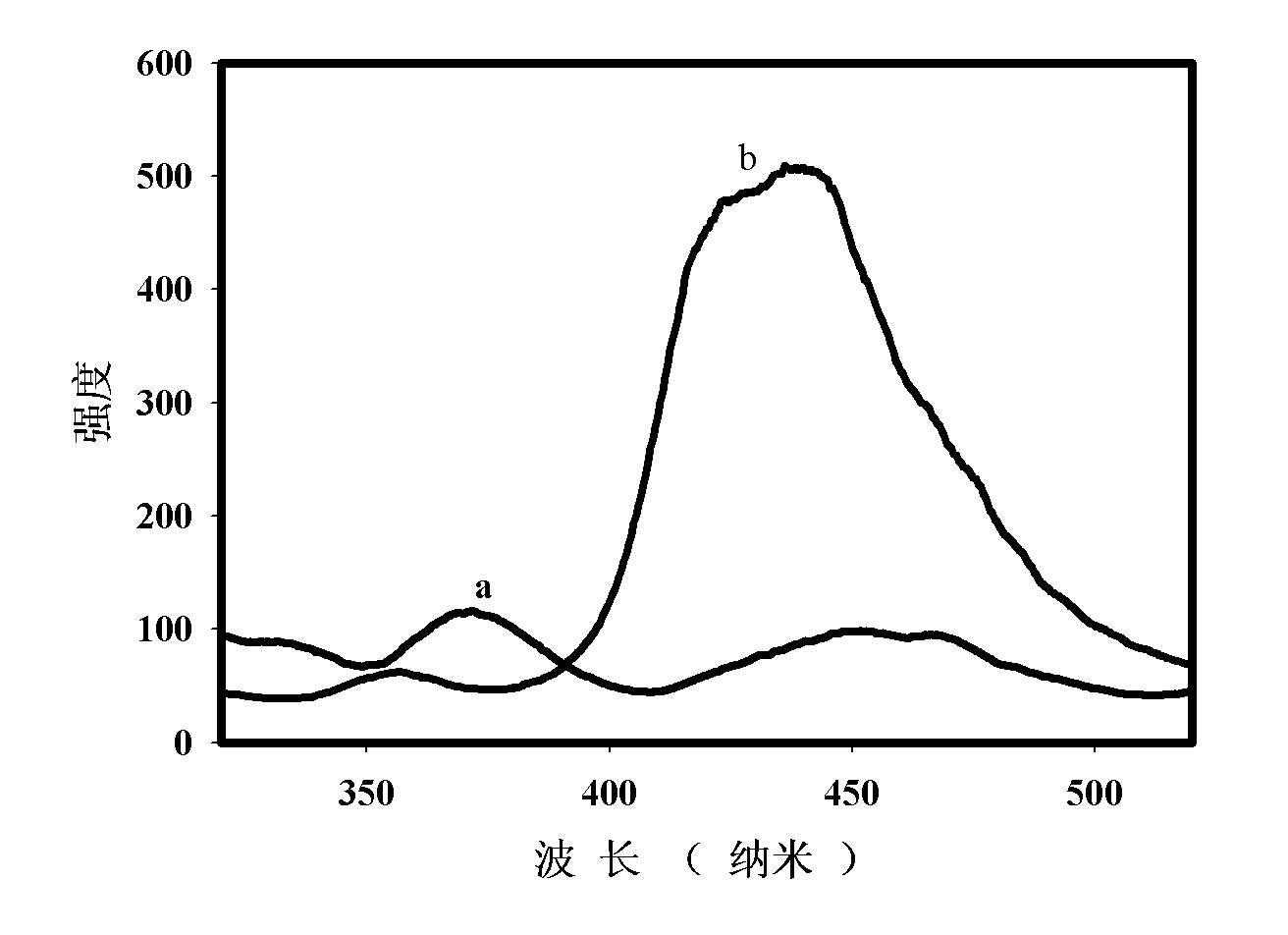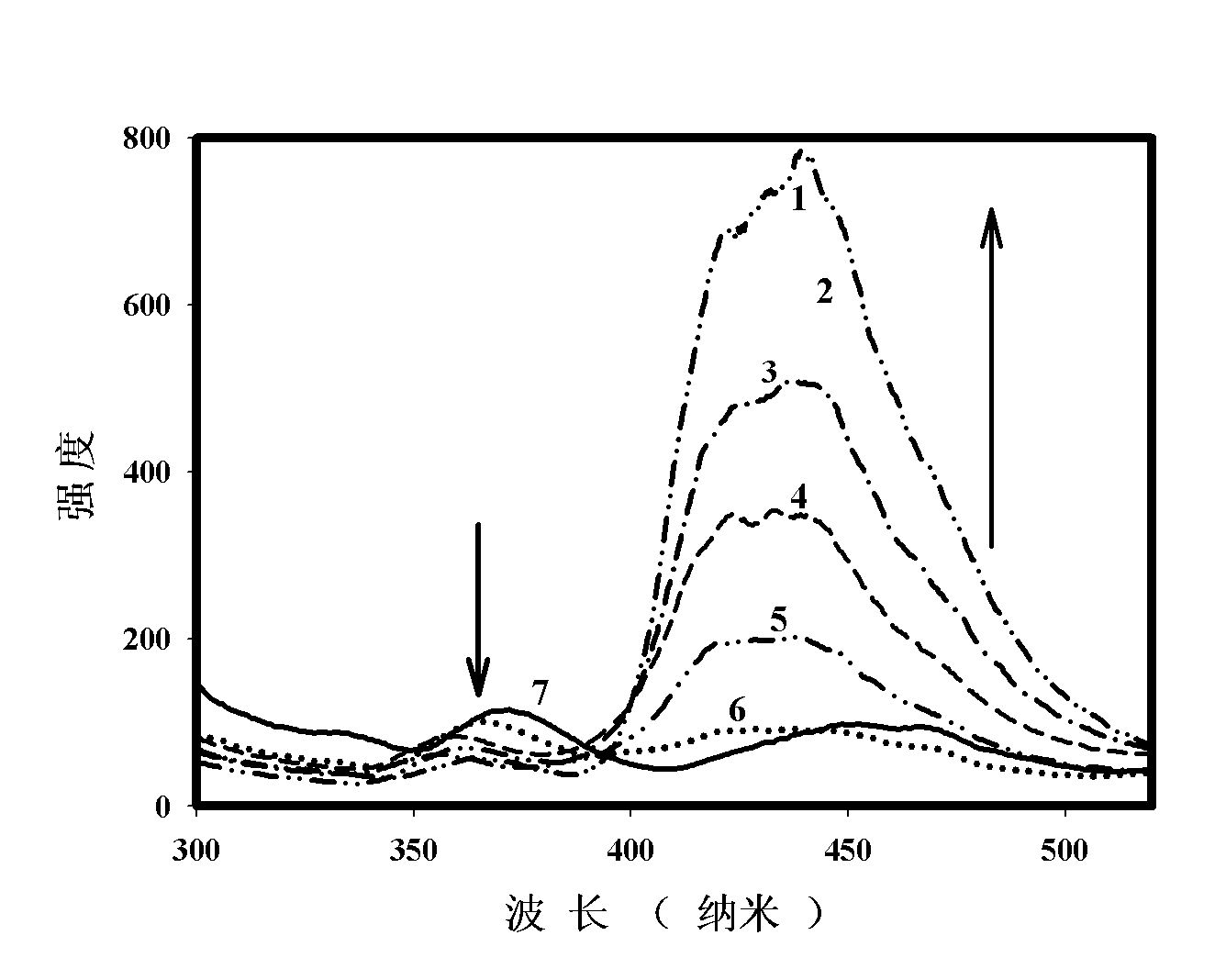Optical sensor for fast detecting polycyclic aromatic hydrocarbon type contaminants and preparation and application thereof
An optical sensor and polycyclic aromatic hydrocarbon technology, which is applied in the field of optical sensors to achieve the effects of stable physical and chemical properties, increased electrical conductivity and simple production steps
- Summary
- Abstract
- Description
- Claims
- Application Information
AI Technical Summary
Problems solved by technology
Method used
Image
Examples
Embodiment 1
[0037] (1) Preparation of TiO by anodic oxidation 2 nanotube arrays;
[0038] (a) polishing the surface of the base material (titanium sheet), cleaning it for subsequent use;
[0039] (b) Preparation of inorganic electrolyte: the electrolyte is composed of 0.1M NaF and 0.5M NaHSO 4 The composition of the aqueous solution;
[0040] (c) under 20V direct current voltage, with pure titanium or titanium alloy as anode, platinum sheet as cathode, prepare nanotube by electrolysis in electrolyte;
[0041] (2) Preparation of CdTe quantum dot-doped TiO by pulse plating method 2 nanotube arrays;
[0042] (a) Preparation containing 0.05MCdSO 4 and 0.02M NaTeO 3 The plating solution, with H 2 SO 4 Adjust the pH to 2;
[0043] (b) TiO prepared above 2 The nanotube array was used as the working electrode, the platinum sheet was used as the counter electrode, and the saturated calomel electrode was used as the reference electrode. The control pulse voltage was -2V, the on-off ratio ...
PUM
| Property | Measurement | Unit |
|---|---|---|
| size | aaaaa | aaaaa |
Abstract
Description
Claims
Application Information
 Login to View More
Login to View More - R&D
- Intellectual Property
- Life Sciences
- Materials
- Tech Scout
- Unparalleled Data Quality
- Higher Quality Content
- 60% Fewer Hallucinations
Browse by: Latest US Patents, China's latest patents, Technical Efficacy Thesaurus, Application Domain, Technology Topic, Popular Technical Reports.
© 2025 PatSnap. All rights reserved.Legal|Privacy policy|Modern Slavery Act Transparency Statement|Sitemap|About US| Contact US: help@patsnap.com



